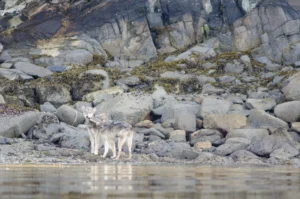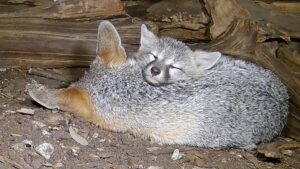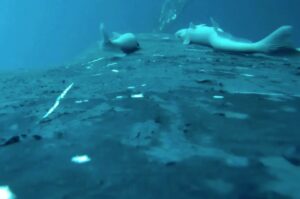A passion for the natural world drives many of our adventures. And when we’re not actually outside, we love delving into the discoveries about the places where we live and travel. Here are some of the best natural history links we’ve found this week.
A Fossil Unlocks how Humans and Apes Diverged: A sophisticated analysis of the upper body of the famous fossil Little Foot has suggested how human ancestors started to diverge from apes. Little Foot, an unusually complete skeleton, walked upright but used its arms to hang from trees. In a way, this transition species had a more human lower half and a more ape-like upper half.
Genetic effects of Chernobyl Radiation: Researchers are still parsing the long-term health effects of ionizing radiation from the 1986 Chernobyl disaster. One study found no evidence that radiation impacted the future children of parents exposed to Chernobyl. The other documented genetic changes in the tumors of those irradiated as fetuses.
Three Successful Flights on Mars: NASA’s Ingenuity helicopter has now made three flights on Mars. The initial one marked the first time that a vehicle flew on another planet. The last flight lasted just 80 seconds and covered just 50m at a height of five metres, but engineers believe that they can push the little helicopter further and reach formerly inaccessible spots.
Tracking an Iceberg: In July 2017, an iceberg the size of Delaware split off from the Larsen Ice Shelf on the Antarctic Peninsula. The iceberg, ingloriously named A-68A, was one of the largest on record. In nearly four years, it drifted over 2,500km before disintegrating earlier this month. Scientists have filmed its movement to study the life cycles of ice shelves and icebergs.
Decoding Whale Language: Sperm whales uses clicks to communicate with each other. In 2008, Canadian biologist Shane Gero heard something different from the hundreds of clicks he had already recorded: a 40-minute “conversation” between two sperm whales. Since then, he has been trying to understand what they were saying to one another. To do so, he had to get to know the individual animals and what they were doing when they made these sounds.
Microbial Life possible on Mars: A new NASA study suggests that microbial life is possible on Mars. It studied Martian meteorites — rocks blasted from Mars that eventually land on Earth. The areas just below the surface of the rock could host microbial communities if they were in constant contact with water. “Wherever you have groundwater on Mars, there’s a good chance that you have enough chemical energy to support subsurface microbial life,” said one of the researchers.
Algae morph into animal-like predators: Scientists have long thought that green algae survived exclusively on sunlight. Then in 2013, ecologist Eunsoo Kim saw the single-celled alga engulf a bacteria. Now, five more oceanic species of algae appear to be partly predators as well. Some green algae “combine both a plant-like lifestyle through photosynthesis and an animal-like lifestyle through predation,” explains Sophie Charvet, who worked on the study.






